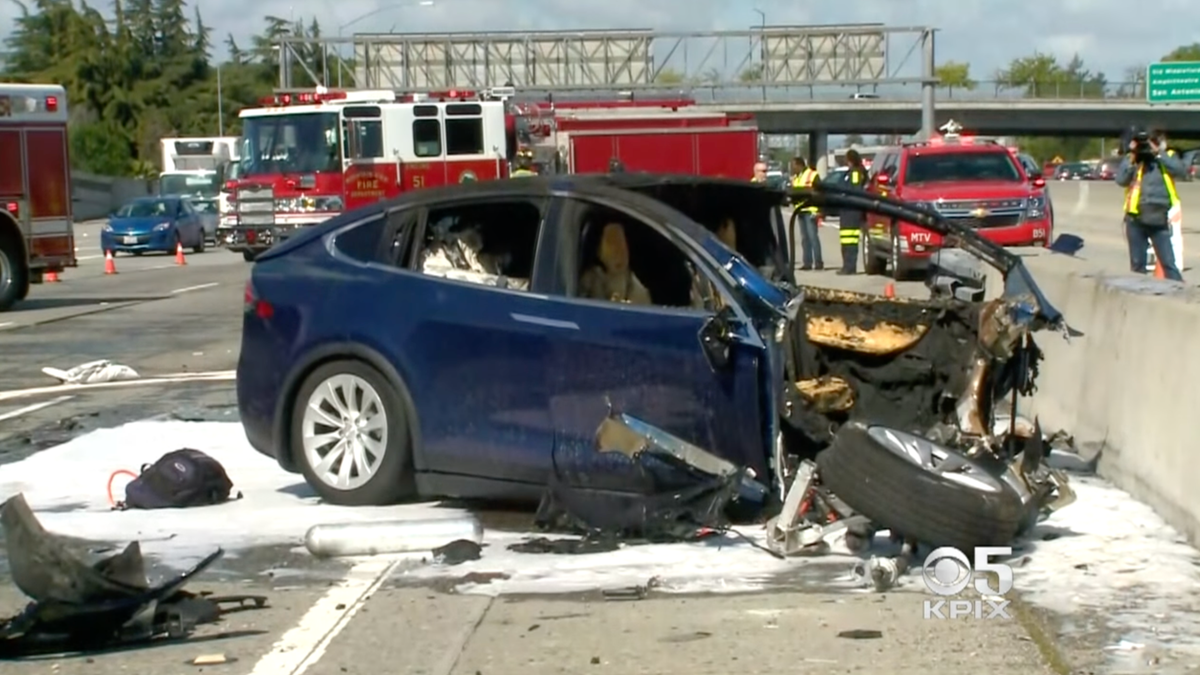Tesla is trying to get Apple to help prove that a Model X driver who worked for the tech company was playing a video game on his iPhone when he was killed in a crash while Autopilot was engaged.
This is happening despite the fact the National Transportation Safety Board investigated the matter and could not reach a definitive conclusion about what Wei “Walter” Huang – an engineer at Apple who crashed and died on his way to work – was doing in the final seconds before the impact, according to The Verge. Still, lawyers for his family believe Apple is “secretly” maneuvering to help Tesla blame him for distracted driving before the crash.
The forensic examination did prove that Huang was playing Sega’s Total War: Three Kingdoms when his Autopilot-enabled Model X crashed into a safety barrier along U.S. Highway 101 in Mountain View, California in 2018. However, his family’s attorneys say Tesla cannot prove that just because the app was open on his screen.
In a pretrial motion filed last week, lawyers for his family accused Apple of “engaging in a secret discovery ‘work around’ to help support Tesla in its defense of the pending case,” according to The Verge.
At the core of the issue, the two sides are fighting over whether Tesla can call an Apple engineering manager as a witness at the two-month trial set to start next week in San Jose. Here’s more from Bloomberg:
Tesla has prevailed in two previous California trials over Autopilot — the second one involving a fatal crash — in which the driver-assistance system was blamed after the vehicles veered off the road.
The company voluntarily recalled 2 million vehicles late last year after the National Highway Traffic Safety Administration found that Autopilot failed to ensure drivers stay attentive. Lawyers representing crash victims and family members who have sued Tesla over accidents say the determination bolsters their claims that the technology is defective and contributed to collisions.
Tesla obtained a sworn statement from an Apple engineering manager, James Harding, who analyzed unencrypted telemetry data on Huang’s phone and said it “suggests possible user interaction, which might be a screen touch or button press.”
The Huang family’s lawyers have countered in a court filing that Tesla purposefully hid its questioning of Harding from them until after pretrial fact-finding deadlines. They are now trying to force Apple to provide more information, and the iPhone maker is pushing back, saying that it shouldn’t have to hand over confidential material.
The NTSB said in a report that the probable cause of Huang’s crash into a barrier along Highway 101 in Mountain View was a combination of “limitations” with the Autopilot system and the driver’s “lack of response due to distraction likely from a cell phone game application and overreliance” on Autopilot.
The report noted that the Model X’s computer detected that Huang’s hands weren’t on the steering wheel just before the crash. Tesla’s owner’s manual says Autopilot users must remain engaged while driving.
Tesla wasn’t the only entity blamed in the NTSB’s report, though. It also faulted California’s highway department for failing to fix the barrier Huang’s car hit after it was damaged in a previous crash.

